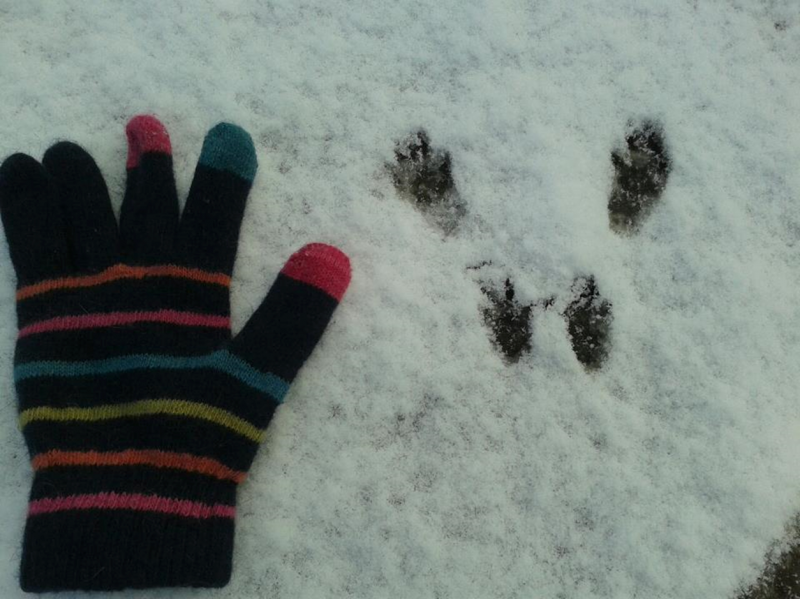Original Author: Emma Rawling, Project Officer for South West Scotland
Winter is a fantastic time to see red squirrel tracks which are hard to see the rest of the year. Emma Rawling, Project Officer for South West Scotland, gives us her top tips for spotting red squirrel tracks.
Winter is a fantastic time to see red squirrel tracks which are hard to see the rest of the year. Squirrels are arboreal, spending most of their time in tree tops, so you don’t often find their tracks unless there happens to be a good mud or sand patch en route to their favourite feeder.

Winter snow makes red squirrel footprints (and those of many other animals) clearly visible, and will give you a good idea of who is out and about, even overnight. Light, fresh snow is best for tracking, rather than hard-packed, icy surfaces. Look for squirrel footprints around your feeders or at the base of trees where they have been busy digging up caches of nuts stored for the winter.
These pictures of a squirrel’s footprints in snow really show how tiny their feet are and how delicate. Notice how the hind feet (at the top of the picture) are much longer than the front, and how the front ‘fingers’ spay out into a star shape – they are long and dexterous for manipulating their food. Many people are surprised at how long a squirrel’s claws are – they are vital tools for all that climbing and clinging.
The shape of these tracks are also a clue as to how the squirrel moves – they ‘bound’, putting both their hind feet forward of their front at each pace. Look out for this next time you see a red squirrel on the ground.
